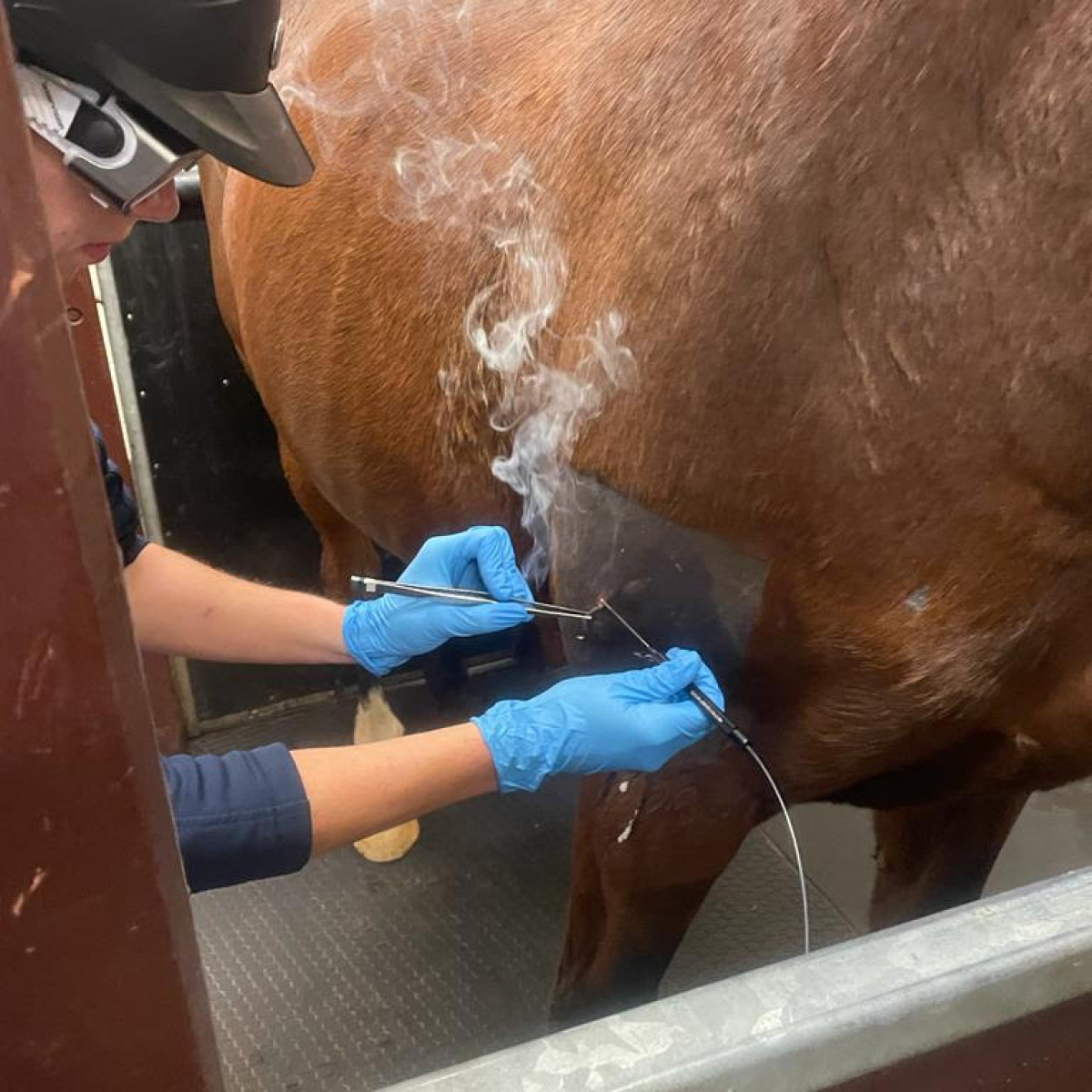The Power of Equine Therapy for Anxiousness, PTSD, and Emotional Recovery
The Power of Equine Therapy for Anxiousness, PTSD, and Emotional Recovery
Blog Article
Laser Treatment in Horse Treatment: A Modern Method to Improving Equine Wellness
Laser treatment has actually emerged as a pivotal strategy in equine treatment, making use of concentrated light energy to promote mobile fixing and quicken recovery from a variety of ailments. By stimulating mitochondrial activity and increasing ATP production, laser treatment not only enhances blood circulation yet additionally offers significant discomfort alleviation.
Comprehending Laser Treatment
Laser therapy, a non-invasive treatment method, has actually obtained considerable traction in equine medication due to its efficiency in advertising healing and discomfort alleviation. Enhanced ATP levels expedite cells repair processes and lower swelling, making laser therapy particularly reliable for dealing with bone and joint injuries, injuries, and other inflammatory conditions in equines - Equine Therapy.
There are several types of lasers used in equine treatment, each with particular wavelengths and power outcomes tailored to different therapeutic demands. Low-level laser therapy (LLLT), also called chilly laser therapy, uses lower power degrees to promote cell function without creating thermal damage. High-intensity laser treatment (HILT), in contrast, makes use of greater power levels to attain much deeper tissue penetration and even more significant healing results.
Veterinarians utilize various laser tools and techniques depending on the condition being treated and the wanted depth of tissue infiltration. Correct training and proficiency are critical for guaranteeing the risk-free and efficient application of laser treatment, thus optimizing its healing capacity while reducing risks.
Advantages for Horse Wellness


With a strong understanding of exactly how laser treatment functions, it is crucial to discover its numerous benefits for equine health and wellness. By stimulating mobile function, laser treatment promotes faster injury healing and help in the regeneration of damaged cells.
In addition, laser treatment has been shown to enhance flow, therefore improving blood flow to influenced locations. Improved flow makes sure that crucial nutrients and oxygen are provided more effectively, facilitating the recovery process. Additionally, laser therapy's anti-inflammatory results help in minimizing swelling and pain, which is essential for the overall wellness of the steed.
Pain monitoring is another considerable benefit. By launching endorphins and obstructing pain signals, laser therapy gives reliable, non-invasive alleviation from both acute and persistent pain. This can add to improved movement and high quality of life for the pet.
Last but not least, laser treatment is a non-invasive treatment alternative, minimizing the danger of problems related to more intrusive treatments. Its adaptability and effectiveness make it a very useful device in contemporary equine vet medicine.
Typical Conditions Dealt With
Horse specialists frequently run into a selection of problems that can be properly taken care of via laser treatment. Among the most usual are bone and joint concerns, consisting of ligament and ligament injuries. Laser therapy speeds up the recovery process by boosting cellular repair and lowering swelling, which is essential for injuries such as tendonitis and suspensory ligament desmitis.
An additional prevalent problem treated with laser treatment is joint inflammation. Equines experiencing from both acute and chronic joint inflammation gain from the anti-inflammatory effects of laser therapy, which aids to ease pain and boost joint function. In addition, laser treatment is utilized in the monitoring of injuries. Whether managing medical lacerations or terrible injuries, the technique advertises quicker tissue repair and decreases the danger of infection.
Horse respiratory conditions, such as persistent airway obstruction (RAO), also respond favorably to laser treatment (Equine Therapy). Laser therapy is valuable in treating hoof problems, including laminitis and abscesses.
Treatment and Safety
Carrying out laser treatment in equine treatment involves a meticulous procedure to guarantee both efficiency and safety and security. The process begins read this article with an extensive vet evaluation to identify the viability of laser therapy for the steed's certain problem. When deemed appropriate, the therapy area is prepared by cleansing and, if essential, clipping the hair to enhance laser infiltration.
The practitioner should pick the proper type of laser, commonly a low-level laser (LLLT) or a high-power laser (HPL), depending upon the problem being dealt with. The laser gadget is then calibrated to the proper wavelength, power, and period setups. During the application, the practitioner moves the laser over the targeted location in an organized fashion, ensuring read more constant and even direct exposure.
Safety procedures are strictly stuck to, consisting of making use of safety eyeglasses for both the specialist and the equine. In addition, it is crucial to monitor the steed for any indications of discomfort or adverse responses throughout the treatment. Post-treatment, the horse is often provided a duration of rest to enable the restorative results to materialize.
Future of Equine Laser Treatment
As developments in veterinary medication proceed to unfold, the future of equine laser therapy holds considerable assurance. Arising modern technologies and deeper clinical insights are set to improve and increase the applications of laser treatment for horses.
In addition, continuous study into the molecular and cellular systems of laser therapy will likely produce maximized protocols tailored to particular problems, enhancing effectiveness and minimizing therapy times. Customized therapy strategies based on genetic and biochemical markers could come to be a reality, making sure that each steed obtains one of the most ideal and reliable treatment.

Conclusion
Laser treatment in equine therapy stands for a significant improvement in vet treatment, supplying a non-invasive solution to improve steed health. By promoting mitochondrial activity and enhancing ATP production, this technique effectively promotes cellular repair, accelerates recovery, and supplies pain alleviation. Its application spans numerous problems, including bone and joint injuries, wounds, and inflammatory diseases, making it a functional and effective alternative to traditional therapies. The future of equine laser therapy guarantees proceeded advancement and enhanced outcomes for equine health monitoring.
Report this page